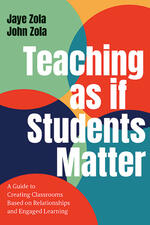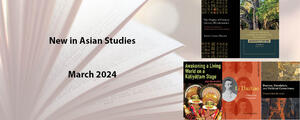
A Different Perspective on Classroom Norms
Guest post by Jaye Zola and John Zola
When it comes to classroom management, educators are encouraged to identify and reinforce “norms” for appropriate behavior. We agree that there is a need for clear expectations for behavior, but in our book, Teaching as if Students Matter: A Guide to Creating Classrooms Based on Relationships and Engaged Learning, we opt for the term “agreements” rather than “norms.” Seems like a small semantic shift, but we believe it is significant.
The term “norms” to define classroom expectations for how we will exist in the classroom space is culturally loaded. Norm comes from “normal” or "normative," and normal is something we are increasingly learning doesn’t really exist. What is normal to you might be less than normal to me. In some cultures, a normal way of interacting involves a lot of cross talk and shouting over one another. In another setting, social interaction might be much more restrained with talking over someone being rude or disrespectful.
When we use terms like “norms” in our classrooms, we signal to students that there is one normative way of interacting and being with one another. In general, that is the white or dominant culture way of being and acting. Norms have been used for compliance and denying individual expression. They have been used as a standard of conduct to control and maintain power. It is one of many messages teachers and schools wittingly and unwittingly send to students about what are the right ways of being in the classroom from a dominant culture perspective…rules that might be at odds with students’ cultured or learned ways of being. There might be norms that a student has never known about or experienced. This can perpetuate feelings of disenfranchisement or oppression.
The use of the term “agreements” sends a different message to students. It says that together, we can agree on the modes of interaction and ways of being collectively in the classroom, that “I agree to listen to understand” instead of “you are to listen to understand.” It puts the power for behavior in the hands of the student instead of a top-down position of the teacher saying you must listen. It says that when we are learning together, we need to have certain agreements about how we will engage with one another during specific activities. The difference is that the agreement comes with the notion that this is how we can do our work together to maximize our engagement and learning while in the classrooms. It leaves open the possibility that a norm in your own home might allow for a different style of interaction. It also allows for room to act in other ways when the agreements aren’t in use. There can be a time when it is a jolly free-for-all type of conversation.
In Teaching as if Students Matter, we suggest the following agreements that support active and engaged learning.
- Respect each other’s identity, person, property, and ideas
- Be on time for class and prepared for the day’s lesson
- Be kind and use appropriate language
- Listen to understand
- Bring an open mind and curiosity to our shared learning
As teachers who teach from relationship, we know that each of these agreements needs to be unpacked, clarified, demonstrated, modeled, and practiced. Students will see that this creates a shared environment for learning where ideas are respected, everyone is a learner and there is support for each other. Using the term agreements instead of norms is important. It is one of many, many decisions that help us say to students that I see you and respect who you are as you enter and learn in this classroom with me and your peers.
Jaye Zola is a retired teacher from the Boulder Valley School District and a former instructor at the University of Colorado-Boulder School of Education. John Zola is a retired teacher from the Boulder Valley School District and was Director of School and University Partnerships at the University of Colorado Boulder School of Education.


